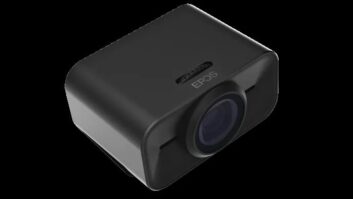New York – Two weeks prior to CEDIA Expo, Sharp used a press conference here to formally introduce two new big-screen 1,080p AQUOS LCD TVs to its expanding HD family.
The TVs will feature 46W- and 52W-inch screen sizes, and sport piano black bezels and new styling designs. Dealers told TWICE that the company will also announce at CEDIA a 42W-inch model that will be positioned “to give plasma a run for the money” during the holidays at a $2,299 MAP.
Sharp executives would not confirm or deny plans for the 42W-inch model as this went to press.
The two announced LCD TVs will ship in October. Suggested retail prices are $4,799. for the 52W-inch LC-52D62U and $3,499 for the 46W-inch LC-46D62U, Sharp said.
Sharp will support all of its AQUOS 1,080p and other 1,080p products with a fall “More To See” advertising campaign that plays up the advantages of 1,920 by 1,080 resolution.
All models will be made at Sharp’s new Kameyama II Gen 8 LCD TV plant, which is being dedicated primarily to the production of large-screen products for the North American market. All of the new big-screen models will include 1,080p-compatible HDMI input to support playback of 1,080p high-definition video from Blu-ray Disc players and other sources.
The sets will include built-in ATSC/NTSC/QAM tuning and Sharp’s proprietary Advanced Super View panels, enabling high contrast performance, deep black levels and sharp detail. Enhanced Quick Shoot video circuitry will deliver faster pixel response time and wider viewing angles, the company said.
The sets were said to produce a contrast ratio of 2,000:1, and a dynamic contrast ratio of 10,000:1 with enhanced picture control technology.
Response time was said to be 4ms when the TV is set to fine motion mode. The panels will also permit a 176-degree viewing angle.
They will include Sharp’s proprietary four-wavelength backlight system that provides a wider color spectrum to achieve deeper reds than was previously possible.













